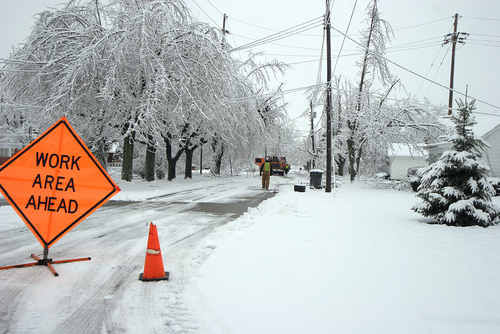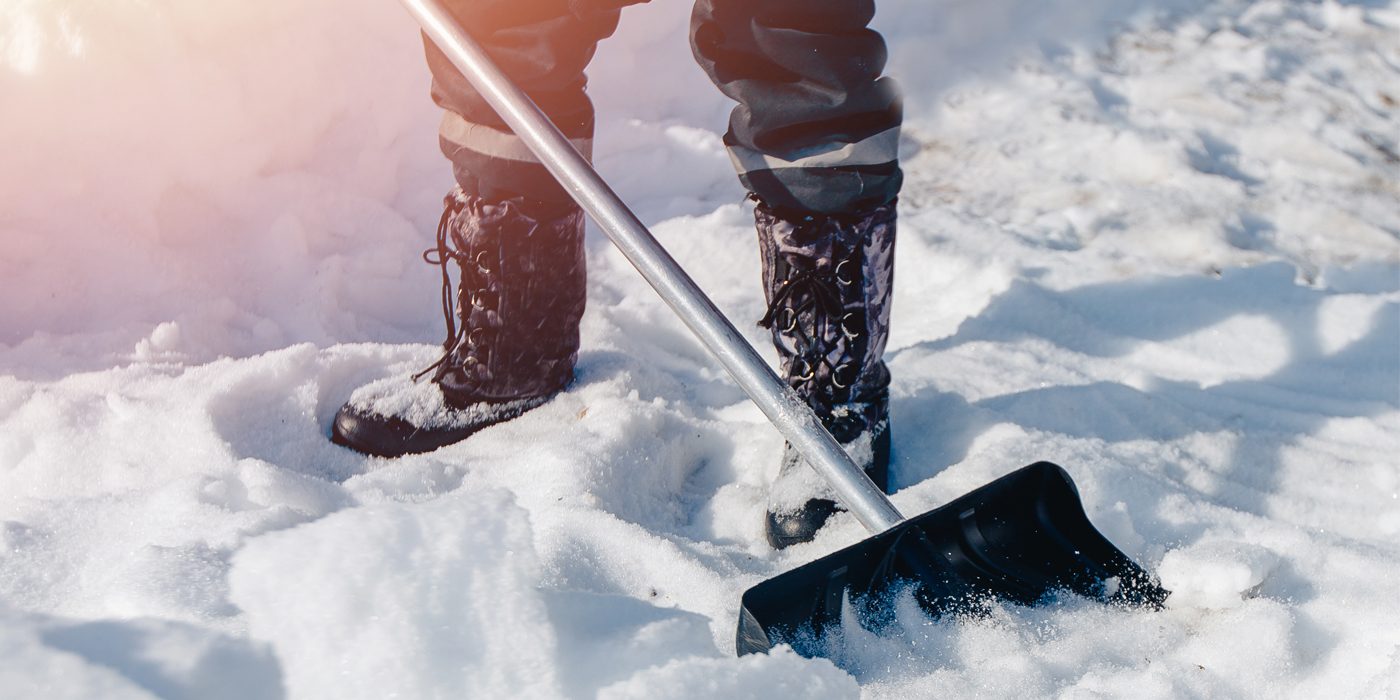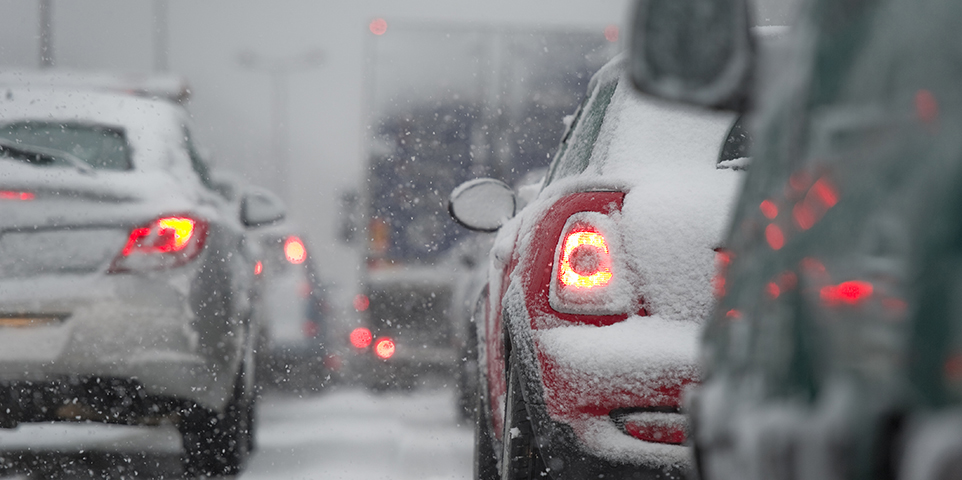We’ve made it to the Fall and Winter seasons of 2020 so let us look at some safety practices to get us through this period of cold,  ice, and snow, through the eyes of our Safety Culture program. By now, all of our Comp Alliance members should have a strong focus on their Culture of Safety – the attitudes, beliefs and work practices an organization maintains towards safe work conditions. It equates to the positive application of safety standards within your department. The winter months pose the usual workplace safety concerns but it’s always pertinent to review your department operations and the safety protocols in place.
ice, and snow, through the eyes of our Safety Culture program. By now, all of our Comp Alliance members should have a strong focus on their Culture of Safety – the attitudes, beliefs and work practices an organization maintains towards safe work conditions. It equates to the positive application of safety standards within your department. The winter months pose the usual workplace safety concerns but it’s always pertinent to review your department operations and the safety protocols in place.
The OSHA General Duty Clause relies on each employer to furnish to each of its employees employment and a place of employment which are free from recognized hazards that are causing or are likely to cause death or serious physical harm to its employees. Although there are no Federal or New York State laws that specifically mandate training for your staff on winter safety, the exposures and hazards that municipal workers face during the colder months are covered by the General Duty Clause. For any employee who is required to work outdoors during the winter months, exposure to cold, foul weather and slippery conditions would be considered a “recognized hazard”. It is the employer’s duty to provide training and properly equip the staff to recognize and be protected from these winter hazards.
Slip/Fall Hazards - Your staff should be required to wear proper footwear at all times. In colder months, your staff should be reminded to check the treads of their work boots/shoes to help to prevent slips and falls on wet or icy surfaces. For work on extremely slippery surfaces, the use of cleats or slip-on grips may be needed – these are especially helpful for police officers. Your staff should also be reminded to take it slow and maintain a stable center-of-gravity when walking across slippery yards or parking lots. Office staff should be instructed to wear boots to and from their cars and change to office footwear once they arrive indoors. Slick conditions (ice, snow, leaves) should also be noted and corrected as soon as possible, and watch for areas that accumulate water and ice quickly.
Shoveling Snow – the physical demand of removing snow by hand can cause serious injury. Working out in the cold for extended periods, coupled with strenuous activities and over-exertion, especially if a person does not exercise regularly, can result in a heart attack or other serious injuries. Warm-up exercises before shoveling snow are recommended, as are frequent rest breaks to warm up and prevent dehydration. Stop shoveling if you experience shortness of breath, chest pain or any other signs of a heart attack. When manually removing snow, choose a shovel that has a comfortable grip and is the correct height and length of the user. Spacing your hands on the grip to increase leverage and pushing the snow, instead of lifting it will help to prevent back injuries.
periods, coupled with strenuous activities and over-exertion, especially if a person does not exercise regularly, can result in a heart attack or other serious injuries. Warm-up exercises before shoveling snow are recommended, as are frequent rest breaks to warm up and prevent dehydration. Stop shoveling if you experience shortness of breath, chest pain or any other signs of a heart attack. When manually removing snow, choose a shovel that has a comfortable grip and is the correct height and length of the user. Spacing your hands on the grip to increase leverage and pushing the snow, instead of lifting it will help to prevent back injuries.
Cold Stress - Anyone who is required to work outdoors, or in unheated or poorly heated garage bays and utility buildings, during the winter months is at risk of cold stress related injuries. Sanitation workers, highway department employees, police and fire personnel, snow clean-up and removal crews, as well as emergency medical technicians should be reminded to take proper precautions over the coming months. Proper dress (layers, avoid tight clothing), winter hats and gloves (no scarves near equipment), stay dry and hyrdrated are keys to avoiding cold stress.
Cold winter weather and wind chills force the body to work harder to maintain the core temperature. (Wind Chill is the temperature that the body feels when air temperature and wind speed are combined.) Prolonged work in cold environments may drive down skin temperature and cause serious health problems, tissue damage and even death.
When faced with prolonged exposure to cold, the body strives to maintain core internal temperature, shifting blood flow away from the outer skin and extremities,(hands, feet, arms and legs), to the chest and abdomen. This shift causes the skin and extremities to cool and may result in frostbite, hypothermia and a condition known as trench foot.
Workers who have to work outdoors for extended periods should be provided with warming stations or be allowed to take frequent breaks indoors. Warm, sweetened liquids, (non-alcoholic), should be provided, as it is easier to become dehydrated in colder weather. Working in teams is recommended so that the staff can monitor each other for signs of cold stress.
Winter Driving – A majority of deaths and serious injuries during snow and ice conditions occur from vehicle accidents! Safe driving practices should be stressed with your employees throughout the entire year. However, during the winter season, when faced with hazardous road conditions that are not under your control, your municipal drivers should be reminded of your safe driving policies regularly. Commercial Motor Vehicles require a pre-trip inspection prior to operation, and special attention to plow trucks is necessary. Drivers should be wearing proper reflective clothing in the event they have to leave their vehicle while on-route. A good vehicle maintenance program should be in place to ensure that all fluids are at proper levels, brakes and tires are in good condition and cooling, electrical and exhaust systems are functioning properly. Emergency notification equipment should also be available and maintained in the event of a vehicle breakdown.
driving practices should be stressed with your employees throughout the entire year. However, during the winter season, when faced with hazardous road conditions that are not under your control, your municipal drivers should be reminded of your safe driving policies regularly. Commercial Motor Vehicles require a pre-trip inspection prior to operation, and special attention to plow trucks is necessary. Drivers should be wearing proper reflective clothing in the event they have to leave their vehicle while on-route. A good vehicle maintenance program should be in place to ensure that all fluids are at proper levels, brakes and tires are in good condition and cooling, electrical and exhaust systems are functioning properly. Emergency notification equipment should also be available and maintained in the event of a vehicle breakdown.
Remember take a look at your commencing winter operations and review the safety protocols for each. Confirm that employee attitudes and values benefit your safety culture through commitment to realistic safety practices for continuous organizational learning, improving hazard awareness and management for hazards shared across the workforce.

